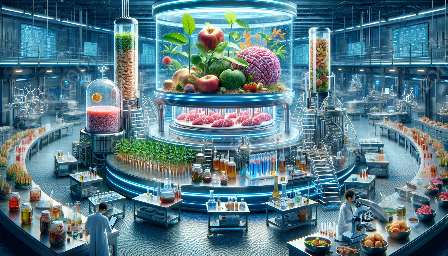In the meat and poultry industry, biopreservation techniques play a crucial role in preserving and enhancing the quality of products. These techniques involve the use of biotechnology and food biotechnology to extend the shelf life, improve safety, and maintain the sensory attributes of meat and poultry products. This article explores various biopreservation techniques and their applications in the context of the meat and poultry industry.
Overview of Biopreservation Techniques
Biopreservation refers to the use of natural or controlled microbiota and/or antimicrobial compounds to extend the shelf life and improve the safety of food products. In the meat and poultry industry, biopreservation techniques are used to inhibit the growth of spoilage microorganisms and pathogens, thereby preventing spoilage and maintaining the quality of the products.
Several biopreservation techniques are commonly used in the meat and poultry industry, including:
- Lactic acid bacteria (LAB) fermentation
- Bacteriocins
- Probiotics
- Bio-based antimicrobial packaging
- High-pressure processing (HPP)
- Natural antioxidants
- Essential oils
Application of Biotechnology in Biopreservation
Biotechnology plays a significant role in the development and application of biopreservation techniques in the meat and poultry industry. By harnessing the power of biotechnological tools, researchers and food technologists are able to explore innovative methods for preserving meat and poultry products. Some of the key applications of biotechnology in biopreservation include:
- Development of LAB cultures for fermentation
- Isolation and characterization of bacteriocins
- Engineering probiotic strains for enhanced functionality
- Utilization of genetic modification for improved product safety and quality
- Bioprospecting for novel antimicrobial compounds
Food Biotechnology and Its Role
Food biotechnology encompasses the application of biological techniques and processes to improve the production, processing, and preservation of food products. In the context of the meat and poultry industry, food biotechnology plays a critical role in the development and optimization of biopreservation techniques. Some of the key areas where food biotechnology contributes to biopreservation in the industry include:
- Biological control of spoilage microorganisms
- Enhancement of functional and sensory attributes of meat and poultry products
- Reduction of foodborne pathogens through natural means
- Integration of biopreservation with sustainable and eco-friendly practices
- Microencapsulation of bioactive compounds for controlled release
- Nanotechnology-based delivery systems for antimicrobial agents
- Utilization of natural antimicrobial peptides for food preservation
- Bio-based active packaging materials with enhanced preservation properties
- Optimizing the use of biopreservation in large-scale meat and poultry operations
- Exploring the potential of precision biopreservation for personalized nutrition
- Addressing sustainability concerns related to biopreservation techniques
- Enhancing consumer awareness and acceptance of biopreserved products
Emerging Innovations in Biopreservation Techniques
With advancements in biotechnology, new and innovative biopreservation techniques continue to emerge in the meat and poultry industry. These advancements are reshaping the way meat and poultry products are preserved and stored, leading to improved quality, safety, and sustainability. Some of the emerging innovations in biopreservation techniques include:
Challenges and Future Directions
While biopreservation techniques offer numerous benefits for the meat and poultry industry, they also present certain challenges and opportunities for future research and development. Challenges such as maintaining consistency and scalability, ensuring regulatory compliance, and addressing consumer acceptance need to be addressed to fully harness the potential of biopreservation in the industry. In the future, research efforts may focus on:
Conclusion
Biopreservation techniques, driven by biotechnology and food biotechnology, continue to revolutionize the meat and poultry industry. By leveraging natural and controlled microbiota, as well as innovative antimicrobial compounds, the industry is able to preserve and enhance the quality of its products while addressing important challenges related to food safety, sustainability, and consumer preferences. As research and innovation in biopreservation advance, the industry is poised to benefit from an even wider array of effective and sustainable preservation solutions.

